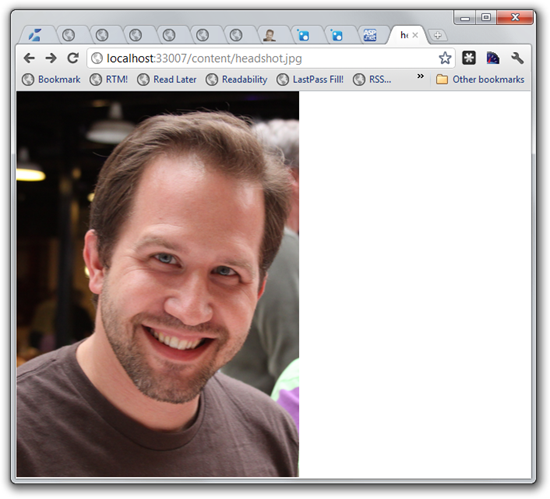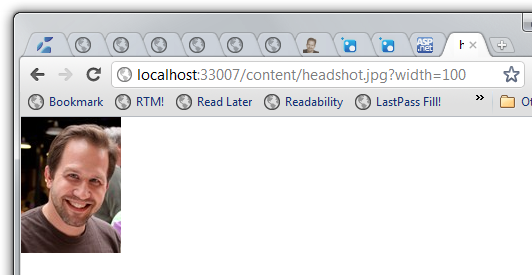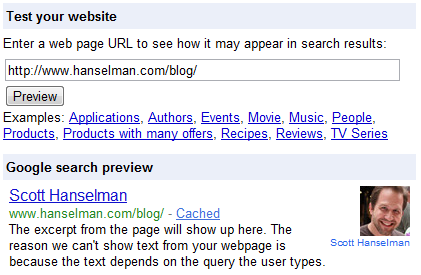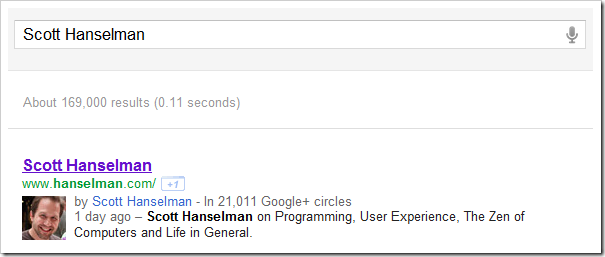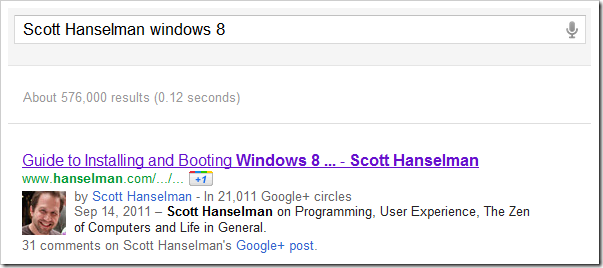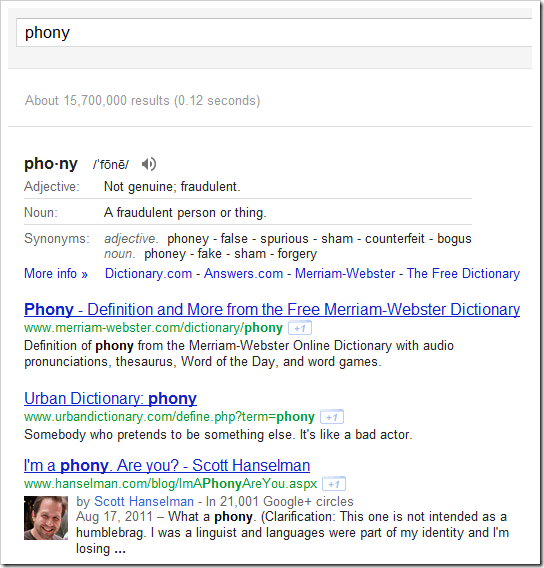 I was perusing the Interwebs yesterday and stumbled on a new article from Zach Holman called Don't Give Your Users Shit Work. I was a little taken aback by the swear word in the title. I clicked around Zach's site, and found his Talks area and clicked on A Documentation Talk and the second slide dropped the F-bomb. Wow, really? I said to myself, is this how to connect with someone who is trying to learn about a technology? I was surprised to find swearing to up front and center on Zach's blog.
I was perusing the Interwebs yesterday and stumbled on a new article from Zach Holman called Don't Give Your Users Shit Work. I was a little taken aback by the swear word in the title. I clicked around Zach's site, and found his Talks area and clicked on A Documentation Talk and the second slide dropped the F-bomb. Wow, really? I said to myself, is this how to connect with someone who is trying to learn about a technology? I was surprised to find swearing to up front and center on Zach's blog.
Is swearing in technology conference presentations appropriate? When did this start being OK? Swearing has always been a part of popular culture and certainly always been a part of technology and technology people. However, in my experience swearing has been more often an after work bonding activity, if at all. It's hanging with fellow coders in a pub after a long day's debugging. It wasn't a part of presentations and certainly not welcome in the boardroom.
I propose that David Heinemeier Hanson popularized swearing unapologetically, or at least brought it out in the open at large keynotes and presentations. David says:
...I’ve used profanity to great effect is at conferences where you feel you know the audience enough to loosen your tie and want to create a mental dog ear for an idea. Of all the presentations I’ve given, I’ve generally had the most positive feedback from the ones that carried enough passion to warrant profanity and it’s been very effective in making people remember key ideas.
As with any tool, it can certainly be misused and applied to the wrong audience. But you can cut yourself with a great steak knife too. Use profanity with care and in the right context and it can be f***ing amazing.
He rightfully notes that it's a tool used with care and isn't appropriate for all instances, but from what I've seen of DHHs talks as well as in pursuing Zach's (who is a lovely chap, by the way), it appears they believe it's a good tool more often than not.
Perhaps it's generational or cultural, but more and more a lot of new under-30 web techies drop the F-bomb and swear liberally in their presentations and slides. Is this the way young web technologists do business now?
I believe that having S*** and F*** in your conference slides or titles doesn't make you cool or professional, or a better coder. It makes you look crass. When is it appropriate and why is it appropriate when other things aren't?
A few years back there was a controversy when some sexually suggestive pictures were used at a popular technology conference in a database presentation. From Martin Fowler:
The main lines of the debate are familiar. Various people, not all women, lay the charge that the images and general tone was offensive. Such material makes women feel degraded and alienated. This kind of presentation would not be tolerated at most professional events.
Defenders of the presenter point out that the slides were humorous and no offense was intended.
Clearly everyone agrees that sexism has no place in technology presentations. They agreed before this incident and many re-declared their support for sexism-free presentations after.
However, many top presenters don't agree that words that are evocative of sex and feces are in fact not appropriate. They would argue these two words have transcended their original meaning and are now well-used as punctuation or that the F-word is useful as nine different parts of speech. Both of these arguments are demonstrably true, but there's so many other words to use. Is the linguistic usefulness of the F-word too tantalizing to give up? Martin mentions DDH using his own words:
David Heinemeier Hansson is happy to proclaim himself as an R rated individual and is happy to consign "professional" to the same pit to which he cast "enterprise".
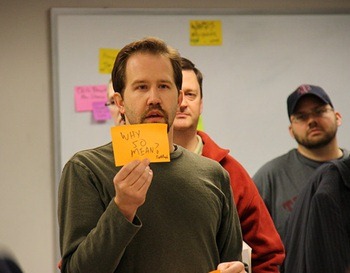 I personally don't put the word professional in the same overused category as "enterprise." Professionalism is well understood, in my opinion and usual not up for debate. Perhaps swearing is appropriate on a golf course where the Sales Suits make deals, but it's not appropriate in business meetings, earnings calls, or technology presentations.
I personally don't put the word professional in the same overused category as "enterprise." Professionalism is well understood, in my opinion and usual not up for debate. Perhaps swearing is appropriate on a golf course where the Sales Suits make deals, but it's not appropriate in business meetings, earnings calls, or technology presentations.
There's hundreds of thousands of perfectly cromulent words to use that aren't the Seven Dirty Words. Or even just the two words that evoke scatology or copulation. At least use some colorful metaphors or create a new turn of phrase. Shakespeare managed, thou frothy tickle-brained popinjay. Zounds.
However, I do recognize that swearing, or specifically the choice to swear in a public forum is stylistic. I wouldn't presume to ascribe intelligence or lack thereof based solely on swearing. To DHH and Zach Holman's credit, their swearing in presentations is a conscious and calculated choice.
Zach says, via Twitter:
I love words. And those words evoke a lot of emotion. I want presentations to be emotional. I want a story to be told...it's certainly a stylistic choice I've made (and connected with). I actually am fine with offending or alienating a few. Because I believe it lets me connect deeper with others.
And this last point is where Zach and I differ. While I'm known to swear in person occasionally, I don't swear on this blog or in presentations. In fact, when I did swear in a recent "off the record" podcast, many found it out of character and off-putting.
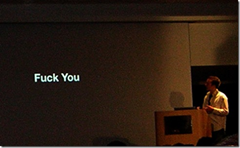 Swearing in presentations or as a part of your public persona might be attractive to some technologists who admire your "passion" or "zeal" but there's no doubt that many others will find that kind of unnecessary coarseness turn off.
Swearing in presentations or as a part of your public persona might be attractive to some technologists who admire your "passion" or "zeal" but there's no doubt that many others will find that kind of unnecessary coarseness turn off.
It's worth noting that DHH is Danish and it's been my experience all over the world that it's primarily Americans that are the most easily offended by the use of our own swear words. You'll often hear the F-bomb on even teenage television shows in many European countries and their movies are almost never censored for language.
Swearing in presentations isn't unique to DHH or Zach, and it's not unique to one technology or another. I'm just using them as an example. Both are reasonable and logical guys, so they both realize this is a difference in a opinion and not a personal attach. In fact, Rob Conery and are working on getting both fellows on the show to talk about Swearing, Connecting with your Audience and Professionalism sometime soon.
My question is, do swear words add as much as they subtract? Do they increase your impact while decreasing your potential audience? I believe that swearing decreases your reach and offers little benefit in return. Swearing is guaranteed to reduce the size of your potential audience.
As I've said before:
"Being generally pleasant and helpful isn't sugarcoating, it's being pleasant and helpful."
I appreciate and respect that profanity in presentations is a deliberate choice. You're cultivating a personal brand.
However, you take no chances of offending by not swearing, but you guarantee to offend someone if you do.
Better if it's a focused style, a conscious choice and all part of your master plan but it's not for me. I choose to blog, speak and teach without swearing. My message is clearer without these words.
Hosting By

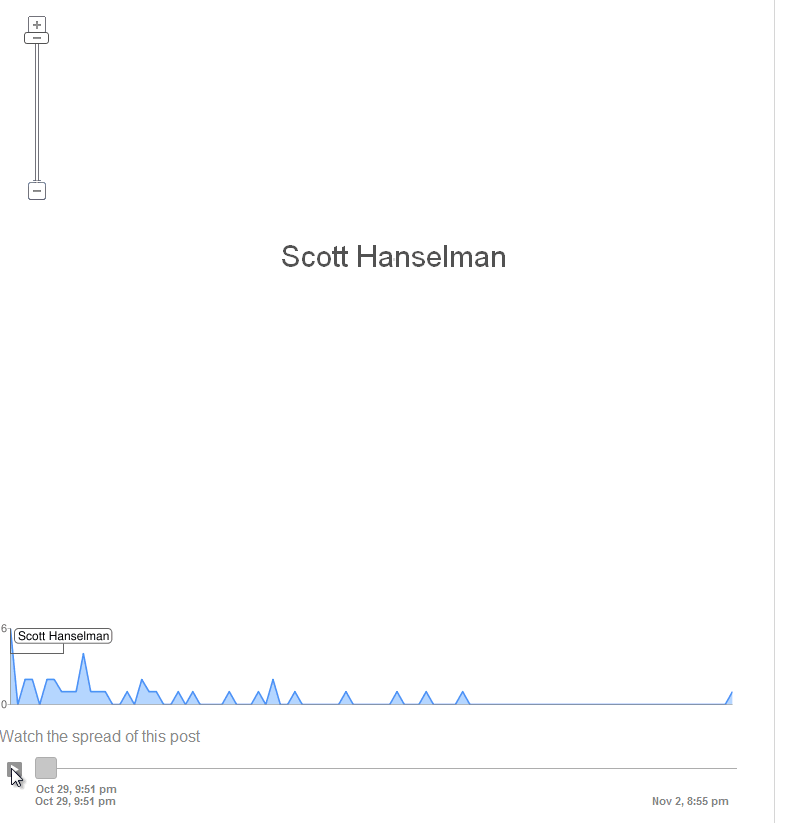




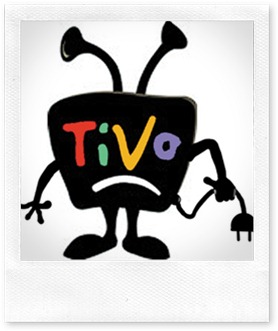 I have long said it's important to not
I have long said it's important to not 
